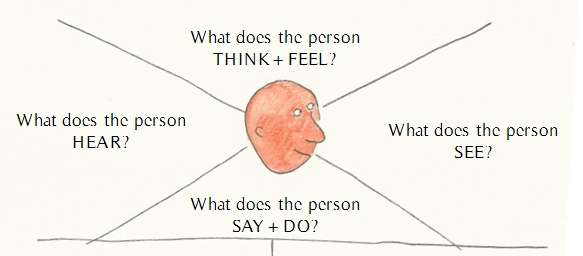Once in a while, if you are very lucky, you get a gigantic dose of brain candy. That was my experience at Agile 2013, a five-day gathering of smart and thoughtful individuals working to find new ways to work, particularly in the realm of software development.
This was an enormous conference, twice as large as anything I’d been to and twice as long. There were more than 1,700 people registered for five days of non-stop idea sharing. In every time slot, there were over a dozen sessions to choose from. That didn’t count the unscheduled ‘open jam’ sessions and lively discussions during the breaks.
 And don’t forget the parties. We were, after all, in Nashville. Music City. Honky Tonk Heaven.
And don’t forget the parties. We were, after all, in Nashville. Music City. Honky Tonk Heaven.
It took place in a hotel that could pass for an amusement park. The Gaylord Opryland Conference Center is a massive biodome-like structure with islands, rivers, jungles and other distractions. Rooms are in at least five distinct buildings connected by meandering paths on several levels. It’s one thing to be lost in a new city. But to be lost in your own hotel? Every five minutes? Our hotel map would prove to be as important as our room keys.
This could have been a ticket to overwhelm. Instead, it was a most exquisite learning experience. Inspired by the Agile Manifesto, this is a community that spends its days promoting collaboration, pairing discipline with creativity, trying to create more people-centric work situations, and learning.
So what did I take away from this adventure that might be useful for readers of this blog?
People Stuff
I was impressed by how many sessions there were on non-technical topics, such as interpersonal skills, personal development and leadership, and how well attended they were. For example, I made 40 copies of my session handout and considered that optimistic for a session on communication. Twice that number showed up. Between sessions, words like “empathy” and “conflict” bounced around as easily as “estimates” and “value.”
I interpret this as a signal that business (at least this crowd) is getting the message that, at work, we’re dealing with humans, not resources. At last!
At conferences of communicators, trainers and coaches, I see lots of sessions about process, technique and technology to help us in our work with people. At this conference, I saw lots of sessions about communication, training and coaching to help us in our work with technology. My worlds are converging!
Role Models
One of the first sessions I attended was with Linda Rising who spoke about the effect of mindset on our abilities. She cited fascinating research suggesting the benefits of a flexible mind in helping us hone our capacity to learn and change. It was inspiring to meet a woman of her generation (she’s 71) still actively learning and changing, and impacting the business world through her speaking and writing.
There’s a comfortable maturity about the agile crowd, regardless of chronological age. They’re quietly smart, rather than bombastic defenders of their opinions. When they disagree, discussions tend to be conversations, not debates. Even when they’re being immature – see Honky Tonks, above – agilists get invited back.
Emphasis on Empathy
 The art of imagining oneself in someone else’s shoes is a key element of emotional intelligence. While some people seem to have a natural knack for it, it’s a skill that can be learned and agilists want to learn it. The topic of empathy came up frequently in presentations and conversations at Agile 2013. I may have been sensitive to it, since using an empathy map to plan a conversation was one of the exercises in our session, but it seemed to pop up everywhere.
The art of imagining oneself in someone else’s shoes is a key element of emotional intelligence. While some people seem to have a natural knack for it, it’s a skill that can be learned and agilists want to learn it. The topic of empathy came up frequently in presentations and conversations at Agile 2013. I may have been sensitive to it, since using an empathy map to plan a conversation was one of the exercises in our session, but it seemed to pop up everywhere.
Jean Tabaka spoke of designing empathy into the customer experience. Gil Broza spoke about the Curious, Present and Empathetic Coach. Chris Sims addressed it in his session on empathetic listening. Johanna Rothman spoke of empathy (and many other things) while we enjoyed a wonderful dinner. Christopher Avery alluded to it when he spoke about communicating with executives.
Just as empathy for the user is a key success factor in building usable software – or creating any good user experience – it’s a prerequisite for a successful conversation. I’m delighted to see so many people exploring and promoting it.
Role of Data
As a business owner I’m exposed to the analytics available for communication campaigns, videos, social media, web sites and marketing initiatives. As a frequent judge of communication awards, I’m very familiar with the need to make plans based on market data and to measure results after communication. And both Forbes and Fortune have been advising anyone who wants a job in the future to understand data.
Watching a vendor demo for LeanKit, a service that makes project workflow visible, showed me what can happen when you track and use data in real time. You can get an amazing picture of what’s going on now or what might happen if you change something. Making work visible is one of the cool practices in agile. For knowledge workers, it can provide a sense of progress, even accomplishment. For decision makers, it’s useful intelligence.
Guacamole and fried pickles?
One of the conference receptions was my first exposure to an all-you-can-eat guacamole bar. It had a full time attendant dutifully mashing and mixing and producing indecent quantities of this green fantasy. I recall nothing else about that evening.
Earlier in the week, at the Wildhorse Saloon, I tried what is supposed to be a Nashville delicacy, deep fried pickles. These battered and bubbled slices aren’t nearly as weird as you might imagine. And they went very well with the fried green tomatoes and fried chicken and deep fried . . . well, you get the picture. After a meal like that, we truly needed the dance floor and a rocking band to work it off.
And More . . .
Some of the individual sessions I attended merit a full post and I’ll be sharing those in the days to come.
The conference left me – and, no doubt, some others – exhausted and overstimulated, like a little kid at Disney World. The 11-hour drive, from Nashville to Waterloo (beautiful scenery, beautiful roads) provided a chance to decompress and reflect. And speaking of Disney World, Agile 2014 is in Orlando. Will I go again? In a heartbeat.
